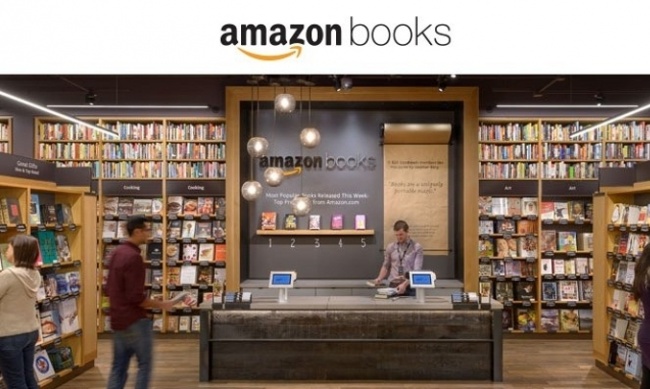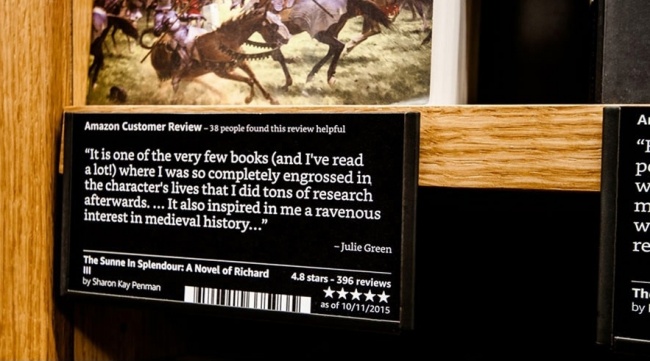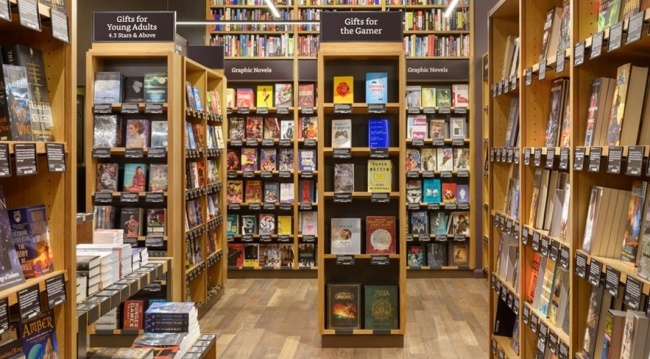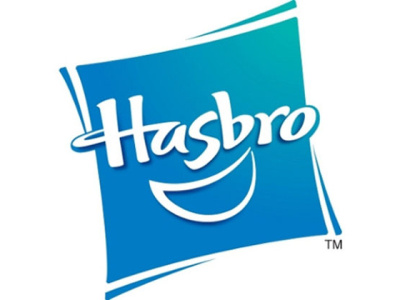Describing it as “a physical extension of Amazon.com,” the company’s new store in Seattle incorporates a number of elements drawn from its online shopping experience. Each book (displayed face-out) will be displayed with a review card showing the Amazon.com customer rating and a customer review. Books for the store were chosen based on customer ratings, pre-orders, sales, and popularity on Goodreads in addition to Amazon curators’ assessments, the company said.
And unlike brick and mortar stores where online sales are the enemy, Amazon encourages its bookstore customers to think Amazon Books as a “store without walls,” where shoppers can either walk out with a book or, using the Amazon app, order the book for shipment, buy an ebook for a Kindle, or add a book to an Amazon Wish List.Amazon devices (Kindle, Echo, Fire TV, and Fire Tablet) will also be on display with device experts available to answer questions.
Books tied to geek culture will be a significant part of the inventory, with a large graphic novel display (with titles such as Bone and Watchmen clearly visible) and “Gifts for the Gamer” shown in the images Amazon released of its new store.Click any image for larger view.
While not the first physical location opened by Amazon (it has several locations on college campuses where customers can pick up orders, drop returns, or interact with a rep), this will be the first where inventory is for sale.
The location Amazon has chosen for its first store, Seattle’s University Village mall, used to be the home of a large Barnes & Noble store, which was shuttered a few years back under relentless competition from, you guessed it, online sales by Amazon.Can Amazon make money selling books in a physical location at online prices? It seems unlikely, but most analysts believe Amazon is losing money on its ecommerce operation as a whole, and that the company is made profitable (for the quarters when it is profitable) by its third-party seller business, and by Amazon Web Services, the fastest growing and most profitable part of its business. So Amazon Books may simply be a real-world extension of the company’s online retailing strategy: sell products at a loss to gain market share and eliminate competitors.
If Amazon decides to go to war over brick-and-mortar retail sales, which still represent a majority of all sales in the U.S. (even in books, see “Amazon Supplier Wars Update”), its access to apparently unlimited amounts of capital and no-holds-barred competitive strategy is going to make the last 20 years look like a day at the beach.












